Folks, I’m going to lay an unpleasant fact on you. Antenna rotators just aren’t made as well as they used to be. Back in the 1970s, my family used an antenna rotator that had a big knob. It looked like this:
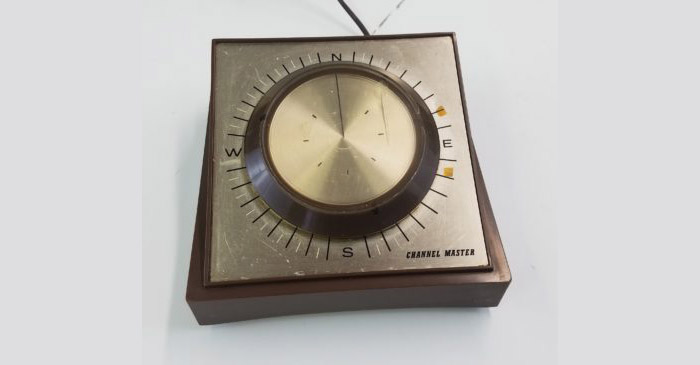
If I had to guess, that rotator would still work today if someone tried to use it. But honestly, that was then and this is now. Unfortunately, US antenna manufacturers don’t make antenna rotators anymore. There are still a few of them out there, and Solid Signal sells them at a fair price. But I think you have to be honest with yourself. Something that sells for under $150 and uses motors to move a big chunk of metal couldn’t possibly last forever. And I’ll admit it, too. If you get 5 years out of a rotator, you’re doing pretty well. Which is why I don’t like to use them.
The better option
If you have the need to get signals from more than one direction, there are two better options. You can use an omnidirectional antenna like the KING OmniPro. It picks up signals in all directions, but doesn’t have extraordinary range compared to large long-range antennas. Or, you can put up more than one antenna like the Televes Ellipse Mix and combine them. That will get you really good performance, but there’s a problem.
When you combine two antennas, you’ll want to make sure you’re doing it right. You’ll have to make sure they’re pointed in two totally different directions. You’ll have to make sure the cable runs are exactly the same. And, I never recommend combining an amplified and a non-amplified antenna, ever. It’s a recipe for disaster. I go into more detail here, if you’re curious.
Now, there’s a new product that promises to make this so easy that anyone can do it, and so powerful that even the most techy of techs will want to do it. It’s Televes’ new SmartKom and if Televes’ reps are right, it beats the previous king of the hill amplifier, Johanssen’s 7474 amplifier. Naturally, I wanted to know more.
For those who prefer video reviews, here’s what you’re looking for:
The looks of it

It’s a fair looking amp, built on what seems to be one of Televes’ standard chassis. This means, as many Televes products to, that there’s a dummy connector on it. In the photo it’s the second one in. But just ignore that, it’s not important.
This amplifier will accept three inputs and, if they’re Televes antennas, it will power their internal preamps and balance both amps so that you don’t overmodulate. It works with the full spectrum of VHF Low, VHF High, and UHF. Televes claims 22-25dB of peak amplification with auto gain control. My tests tended to confirm that, but that’s really not the important part here. The important part is, considering it’s about 4 times more expensive than a Winegard LNA-200, can it do enough magic to justify its price? I set out to find out.
First, something you NEED to know.
There’s something really weird about the way this amplifier gets powered. It uses a special power injector. If you were to look at it, you’d think it was any old power injector, but it isn’t.
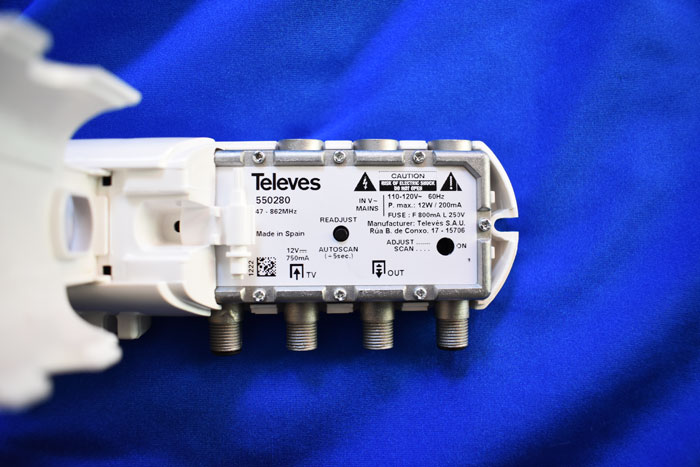
The key here is that it has only one output, where most of the power injectors from Televes have more than one. Also, it has a button to trigger an autoscan. Neither of those are important. What you need to know is that the way this power injector is labeled, you’re going to want to hook it up wrong.
You see that output marked “TV?” It doesn’t go to the TV. It goes to the port on the amplifier labeled “TV.” The output marked “out” goes to the TV. The connection going to the power injector should look like this:
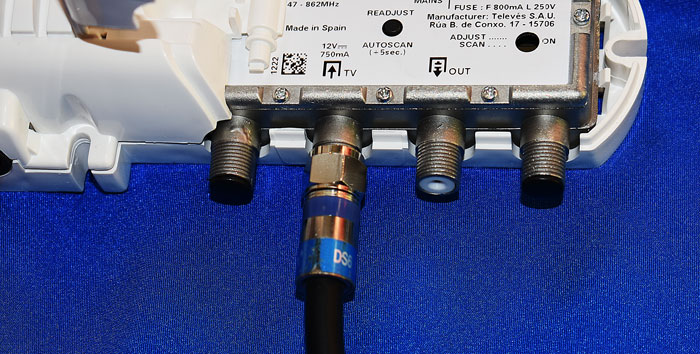
I’m not quite sure how that one got through the manufacturing process, but it doesn’t matter. The most important thing is that you actually connect the amplifier up to power. When you’ve hooked it all up properly, the light on the amplifier will turn green. It will flash at first as it scans the signals coming from all the antennas, then will turn solid.

Using this amplifier

The SmartKom has a nice weatherproof enclosure. It also comes with high-quality zip ties to allow it to be attached to the mast. I would recommend attaching this to the mast with about 3 feet of cable between the antenna and the amplifier.
Initial channel scan
It’s best to connect everything up before powering it. As the amp powers up, it will scan for frequencies on all outputs and automatically adjust itself to give the best results. It’s not just auto gain control, at least that’s what I’m told. It’s comparing the signals from each input and actively rejecting the signals that are weaker. That way each channel is only received from one antenna, eliminating phase problems.
You can rescan by pressing and holding the AUTOSCAN button on the power injector or the amplifier for five seconds. The scan process takes about 30 seconds.
The app, that’s where it really shines
Unlike similar amplifiers, this amplifier uses a free app for even more customization. You can use the QR code on the amplifier itself or just search your app store or play store for “ASuite.” It’s available for Android and iOS. You want the app that looks like this:
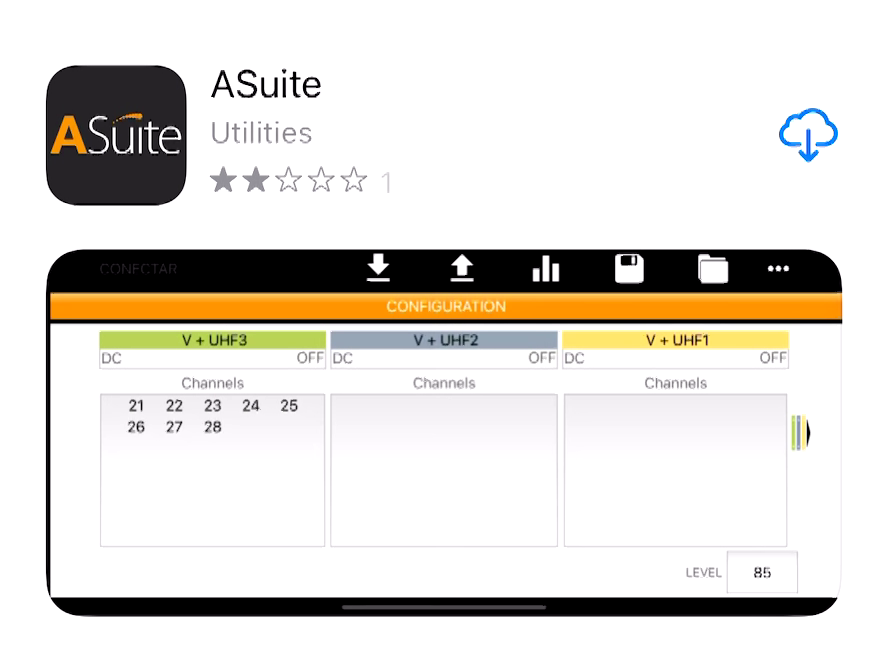
Initial configuration takes a few taps to get going. You have to accept the terms and conditions, allow Bluetooth, and select the amplifier a couple times. In general just tap on the picture that looks like the thing you’re setting up.
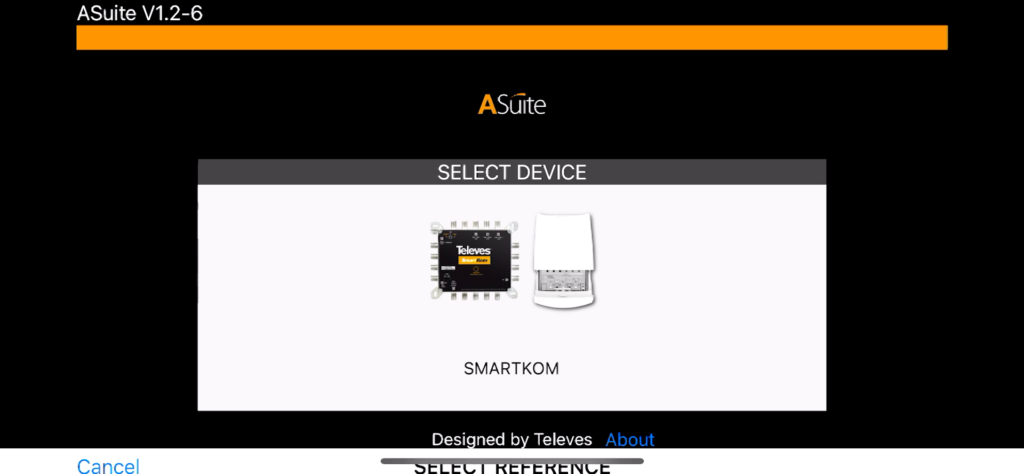
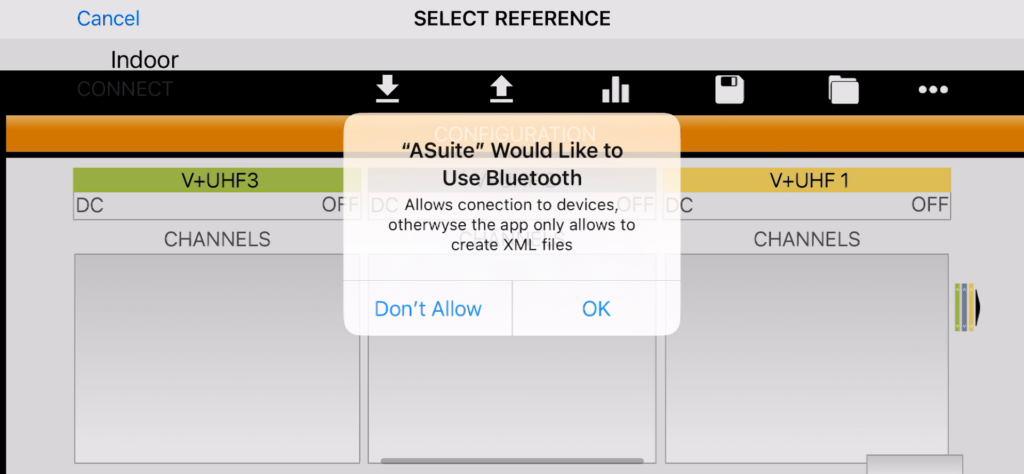
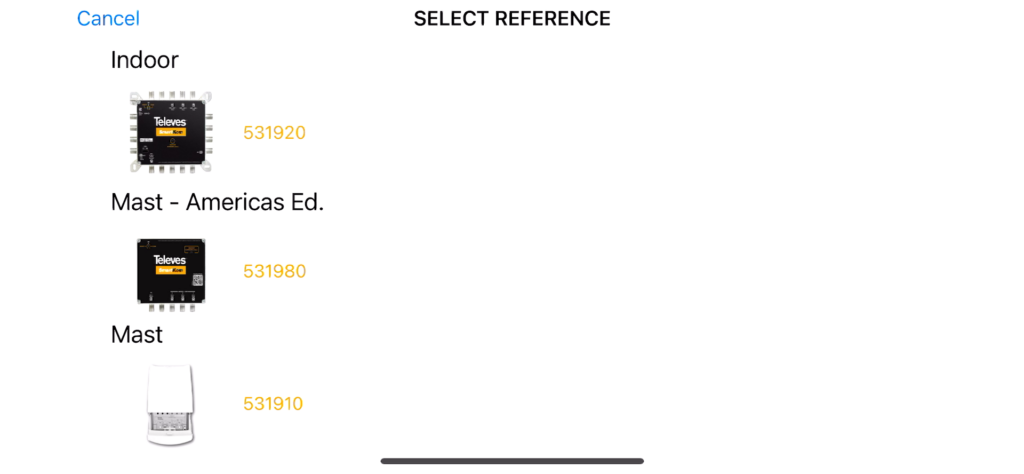

Once you get through all of the initial hoops, you can use this app to manually assign a channel to any of the three inputs. You’ll need to make note of which antenna you’ve physically attached to which input. It’s a very simple tap interface and you can go back in and reassign things at any time.
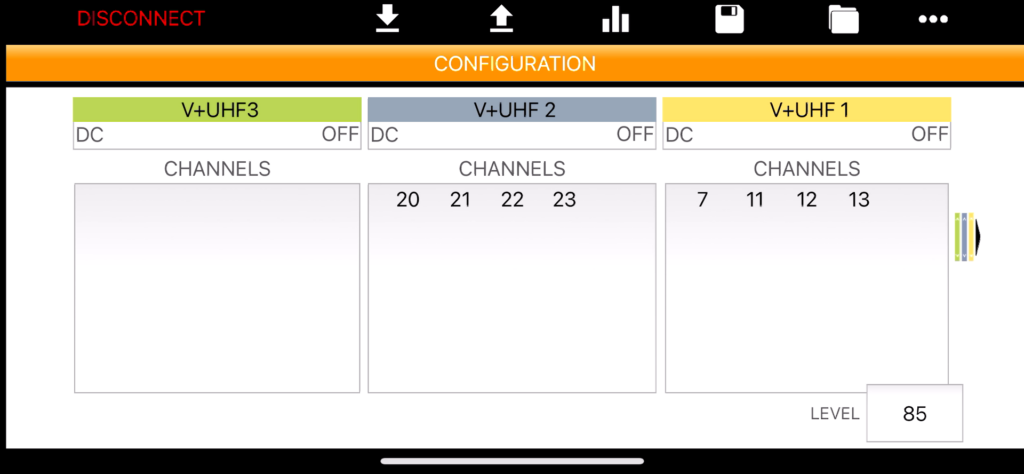
You can also get a lot of information just by tapping and saving. Just be sure to tap the up arrow which uploads the information to the amplifier.
But here’s the real test
As I said, this amplifier is pretty expensive. So you’re going to want to know it’s worth the money. In order to test it, I created the worst case scenario for antenna combining:
- Two antennas of two different brands
- One antenna is actively amplified, one is not
- Both are pointing the exact same direction
- One uses consumer grade RG59 cable from a dollar store
- One uses commercial grade RG6
- The cable lengths are incredibly different
In other words, literally everything that you aren’t supposed to do. If you read articles on this blog and others, you’ll see that this is a recipe for disaster. And it was. I combined these antennas with a cheap splitter I had from 20 years ago, with the “Archer” logo on it (meaning it came from Radio Shack.) Here’s what I got:
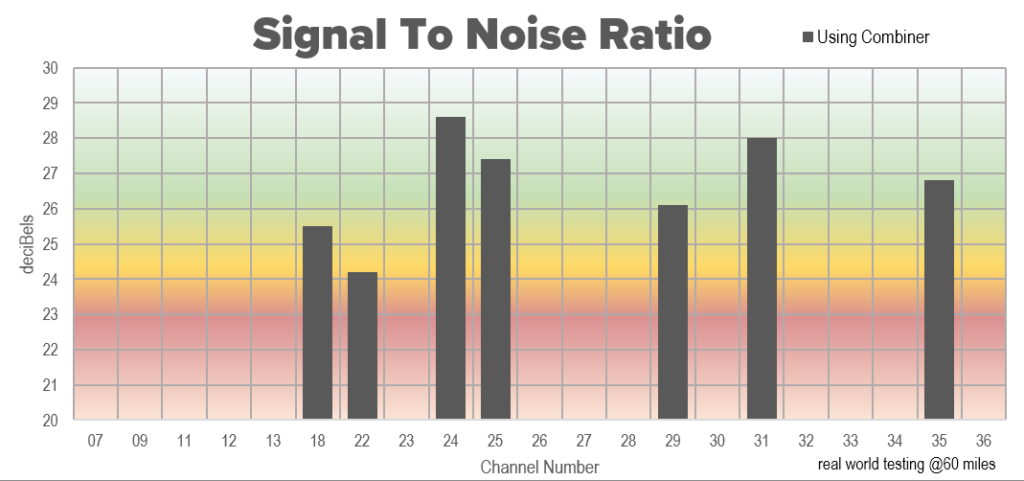
I am showing you signal-to-noise ratio because it’s the truest indication of what channels you’ll actually get. In this case, I got 7 channels and one of them (channel 22) is so low that I probably wouldn’t get consistent signal. This is pretty much the worst result I have ever measured. Even a patch of bare wire measured indoors does better than this. I am guessing that the only reason I even get this many channels is that the unamplified antenna couldn’t pick up certain channels and the amplified antenna could.
Then, I removed the combiner and connected both antennas through the SmartKom. The results are a little bit different to say the least.
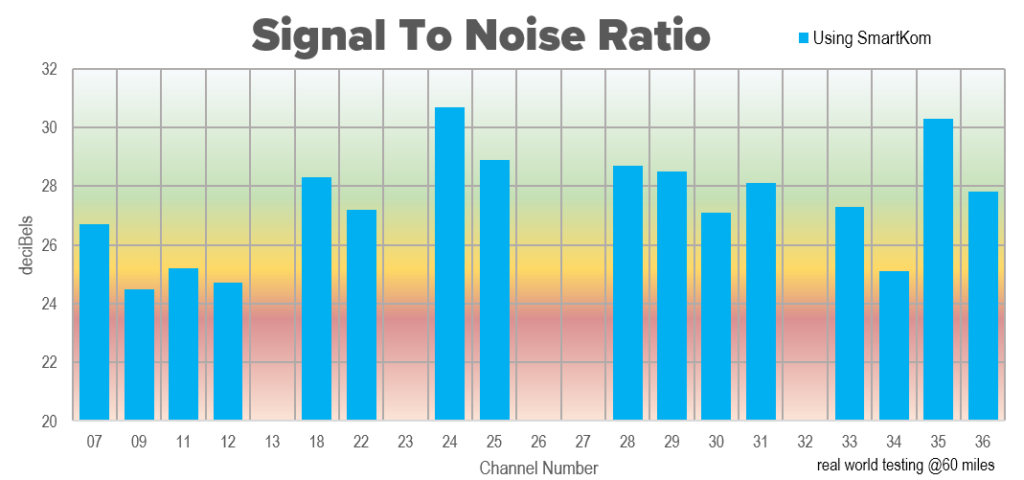
Here I see 15 channels received, with 11 of them coming in strong enough that I have confidence in them. After a bit of fiddling I came to the conclusion that almost all of these were coming from the amplified antenna, which wasn’t a surprise.
Let’s take a look at the data side by side.
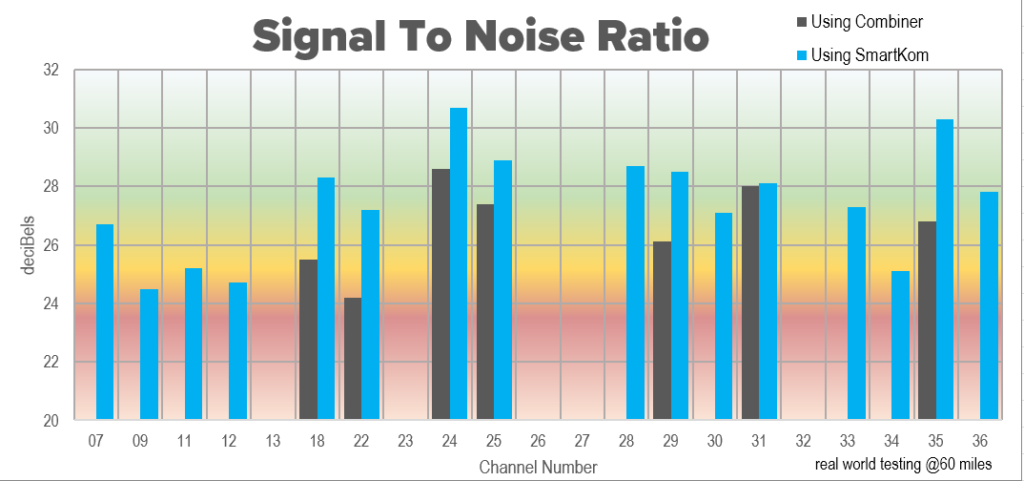
Here it’s incredibly obvious that the SmartKom is receiving a lot more than the “worst case” setup.
What does this tell me?
It tells me that for some people, this antenna is going to be an absolute home run. Imagine you buy an antenna and find it does very poorly on one channel that you want. You buy another antenna and it gets the one channel very well but doesn’t pick up others. You could literally aim both antennas in the same direction and choose which signals were received from which antenna. Or, you could let the SmartKom make the decision and it would still probably do a good job.
It also means that if you wanted to combine three antennas to get signal from three different locations, you could do it and you would not have to worry about phasing problems or interference.
The bottom line here is that not everyone is going to need an amplifier like the SmartKom but if you are the sort of person who would have otherwise put up a rotator, this is a much better bet.
Get this amplifier, and so much more, from Solid Signal
Solid Signal is your home for over-the-air antennas, accessories, and everything else you need to live your best digital life. Shop over 40,000 items at the best prices you’ll find! If you need help making up your mind, call the experts! We’re here for you during East Coast business hours. The number is 888-233-7563, and if it’s after business hours, fill out the form below and we’ll get right back to you!





